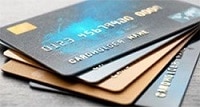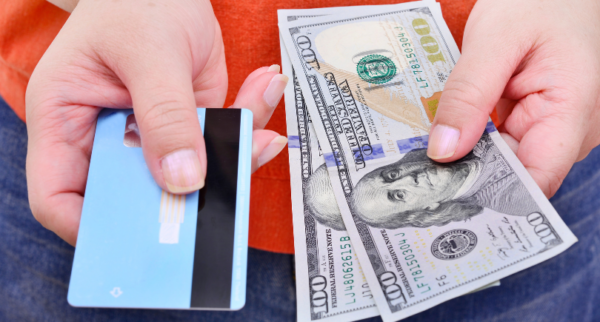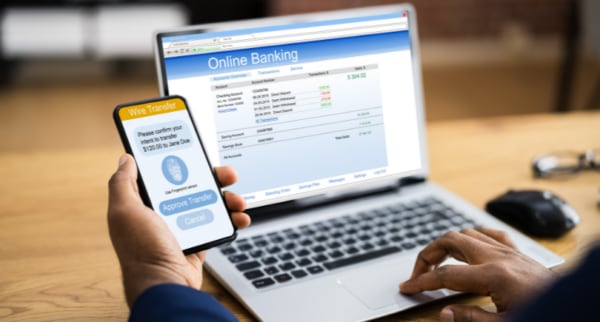Capital One Quicksilver Secured Cash Rewards Credit Card review
This card offers the credit-building power of a secured credit card, plus the rewards-earning potential of a non-secured card with 1.5% cash back earned on all purchases you make.
Jump to Section
card_name
- Rewards
- points_per_dollar
- Regular APR
- reg_apr,reg_apr_type
- Annual Fee
- annual_fees
Key Features
descriptionEditor Analysis:
- Earn 1.5% cash back on all purchases made with the card.
- See if you're approved with no risk to your credit score.
- This card doesn't charge foreign transaction fees so it's great if you have international travel plans on the horizon.
- The ongoing RegAPR APR is a bit steep, so it's best to try and avoid carrying a balance with this card. See Rates and Fees
A credit card can be an excellent tool to help you manage your cash flow and boost your credit score, but if you currently have below-average credit, you might struggle to find a card you qualify for. Many credit cards – especially rewards credit cards – require either good or excellent credit.
That’s where the card_name comes in. It offers the rewards benefit of many unsecured credit cards but is more accessible to consumers working on building their credit. Keep reading to learn more about this card, its benefits, who it’s a good fit for, and more.
How does the card_name work?
The card_name is designed for borrowers who are working on building their credit.
If you’re approved for the card, you’ll be required to pay a refundable security deposit of at least $200, which will be your initial credit limit. This security deposit acts as collateral for the credit card, just as you would have collateral on a secured loan.
Once your credit card is open, you can spend on it just as you would any other. The card currently charges a variable rate of RegAPR, which you’ll pay on any purchases you don’t pay off by the payment date. See Rates and Fees
As you use the card, Capital One will report your on-time payments to the three credit bureaus, and with continued responsible use, you should see your credit score improve. Assuming you use the card responsibly, Capital One will automatically consider you for a higher credit line in as little as six months with no additional deposit. Continue to use your card responsibly and you can eventually earn your deposit back and upgrade to the unsecured CardName which offers a more competitive APR of RegAPR. See Rates and Fees.
What are the benefits of the card_name?
The major benefit of secured credit cards is they’re available to borrowers who are rebuilding their credit or building it for the first time. Security deposits allow credit card companies to accept borrowers who may not otherwise be eligible for a credit card. And over time, your secured credit card should help you increase your credit score.
Unfortunately, that’s where the benefits end with many secured credit cards. The card_name, however, stands out because it allows cardholders to build their credit while also earning rewards.
When you use your Quicksilver Secured, you’ll earn 1.5% cash back on every purchase. For example, if you spend $500 in a month, you’ll earn $7.50 in rewards. If you do that each month for a year, your earnings grow to $90. You can redeem those rewards for cash, statement credits, or gift cards to many of your favorite retailers. Additionally, you can earn unlimited 5% cash back on hotels and rental cars booked through Capital One Travel, where you’ll get Capital One’s best prices on thousands of trip options (terms apply).
Another benefit of the Quicksilver Secured, which many unsecured cards don’t even offer, is that it doesn’t charge foreign transaction fees. Many cash-back cards charge foreign transaction fees of up to 3% when you use them outside the United States, but you don’t have to worry about that with this card. See Rates and Fees
Who is a good fit for the card_name?
A secured credit card can be a powerful tool to help you increase your credit score when you may not otherwise have access to a credit card. And this card, in particular, has the added benefit of 1.5% cash back on every purchase.
The card_name is a good fit for borrowers with limited/bad credit who either have defaulted on a loan or are building their credit for the first time.
As we talk about who this card is good for, we should also discuss who it may not be a right fit for. First, this card isn’t for you if you have good credit and can qualify for an unsecured credit card. Not only can you avoid the security deposit by going that route, but you will also have access more card benefits and potentially a lower APR.
Additionally, the rewards-earning potential this card offers is nice, but don’t let it distract you from your goal of improving your credit. If you think you might get carried away with earning rewards and spend beyond your means, this probably isn’t the best card for you. The rewards earned aren’t worth the cost of carrying a balance and paying a high APR.
How do cardholders rate the card_name?
CardRatings commissioned Slice MR in November 2024 to survey 1,666 cardholders nationwide. Responses were given on a scale of 1-10 and respondents’ ratings were then averaged under broad topics. Here are the results for the card_name:
| Cost Effectiveness | 7.78 |
| Rewards Satisfaction | N/A |
| Customer Service | 7.74 |
| Website/App Usability | 8.23 |
| Likehood of Continuing to Use | 8.43 |
| Recommend to a Friend/Colleague | 7.85 |
| Overall Rating | 7.98 |
Survey results by question
Respondents rated their personal experience with the card_name, answering questions on a scale from 1-10. The results for each question can be found below:
How does the card_name compare to other cards?
The card_name is one of the top secured credit cards on the market, but it’s far from the only option. Let’s see how this credit card stacks up to some of the other top secured cards.
card_name vs. card_name
discontinued
The CardName is different from the Quicksilver Secured in a couple of key ways. First, the Quicksilver Secured requires a minimum $200 security deposit with an initial credit line of $200. Meanwhile, the Platinum Secured still has an initial credit line of $200, but with deposits available of $49, $99, or $200, depending on your credit score.
Another difference between the two cards is the rewards component. While the Quicksilver Secured offers 1.5% cash back on your spending, the Platinum Secured offers no cash back. That being said, the Platinum Secured might be a better choice if you worry about rewards potentially getting you into trouble.
card_name vs. card_name
discontinued_disclaimer
The CardName is another top credit card for those working to build their credit. This card is very similar to the Quicksilver Secured in a couple of key ways. First, both of these cards require a security deposit of at least $200. Your deposit will be equal to your credit limit.
Even more important, the card_name also offers cash-back benefits, which remember, is somewhat rare in the secured-credit card space. You’ll get 2% back on the first $1,000 per quarter you spend at gas stations and restaurants and 1% back on all other purchases. Finally, you’ll get a dollar-for-dollar match of all of your cash back earned at the end of your first year as a cardholder.
Deciding which reward structure is better comes down to where you tend to spend the most. If you spend a lot at gas stations and restaurants, then the higher rewards rate on those purchases might be a better financial decision. However, if you don’t spend a lot in those areas, then the 1.5% flat rate the Quicksilver Secured offers might make more sense.
Is the card_name a good card?
We think the card_name is a great card for anyone with limited/bad credit who can’t qualify for an unsecured credit card. Secured credit cards, in general, can be an excellent tool for credit building. And this card offers the unique benefit of cash back on your spending, which is difficult to find with other secured cards. For borrowers who need a secured card and meet the credit requirements for the Quicksilver Secured, this card is a solid choice.
Frequently asked questions
What credit score is needed for the card_name?
Is the card_name good for building credit?
Our Methodology
Survey methodology: CardRatings commissioned Slice MR in November 2024 to survey 1,666 cardholders nationwide. CardRatings’ website analytics from Jan. 1, 2024-Oct. 31, 2024 were used to determine a selection of the most popular cards. Responses to 10 questions were given on a scale of 1-10. For nine of these questions, respondents’ scores were averaged under broad topics. The overall rating represents an average of respondents’ responses to their overall rating of each card.
Disclaimer:The information in this article is believed to be accurate as of the date it was written. Please keep in mind that credit card offers change frequently. Therefore, we cannot guarantee the accuracy of the information in this article. Reasonable efforts are made to maintain accurate information. See the online credit card application for full terms and conditions on offers and rewards. Please verify all terms and conditions of any credit card prior to applying.
This content is not provided by any company mentioned in this article. Any opinions, analyses, reviews or recommendations expressed here are those of the author’s alone, and have not been reviewed, approved or otherwise endorsed by any such company. CardRatings.com does not review every company or every offer available on the market.
For Capital One products listed on this page, some of the benefits may be provided by Visa® or Mastercard® and may vary by product. See the respective Guide to Benefits for details, as terms and exclusions apply.










